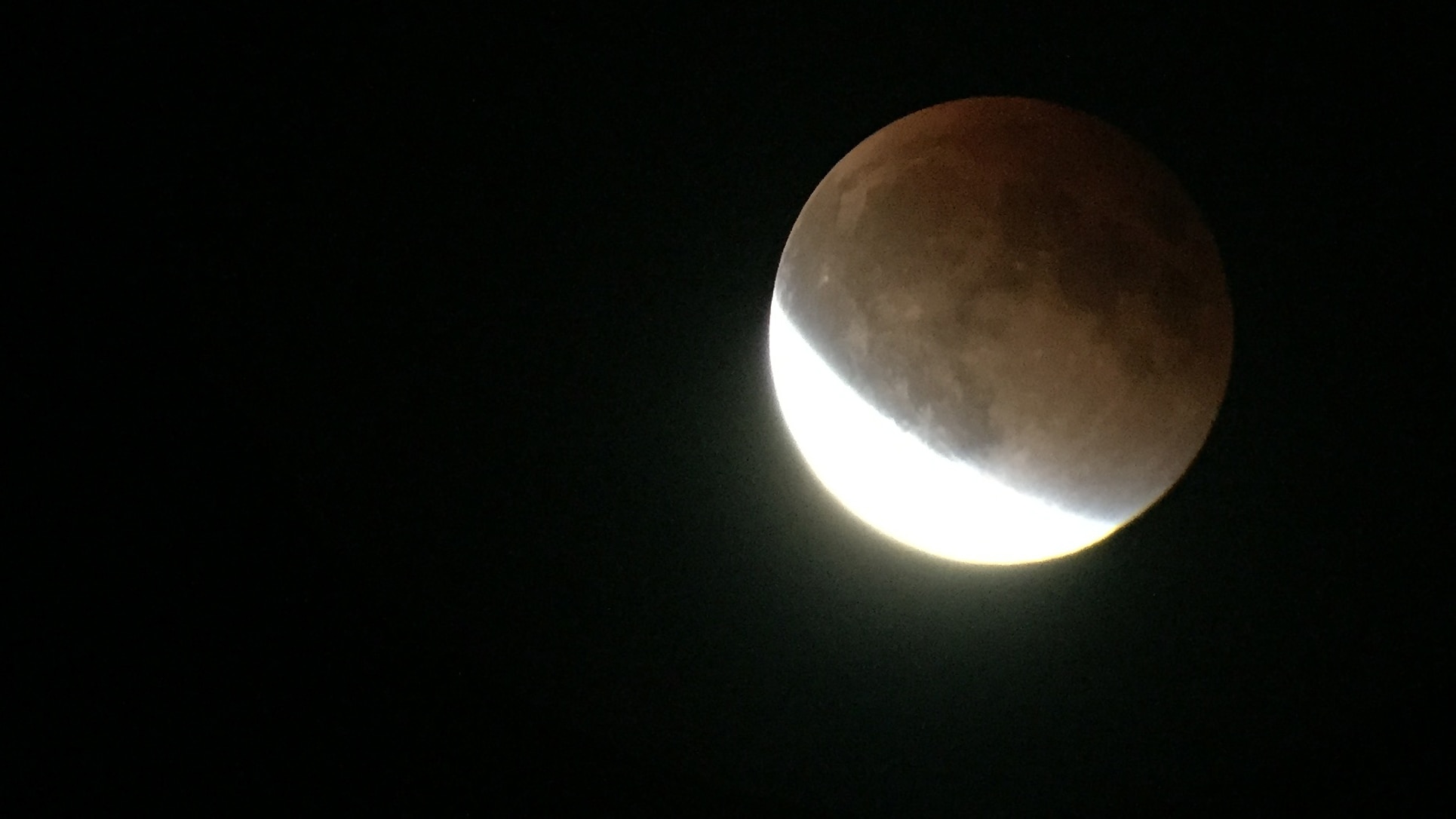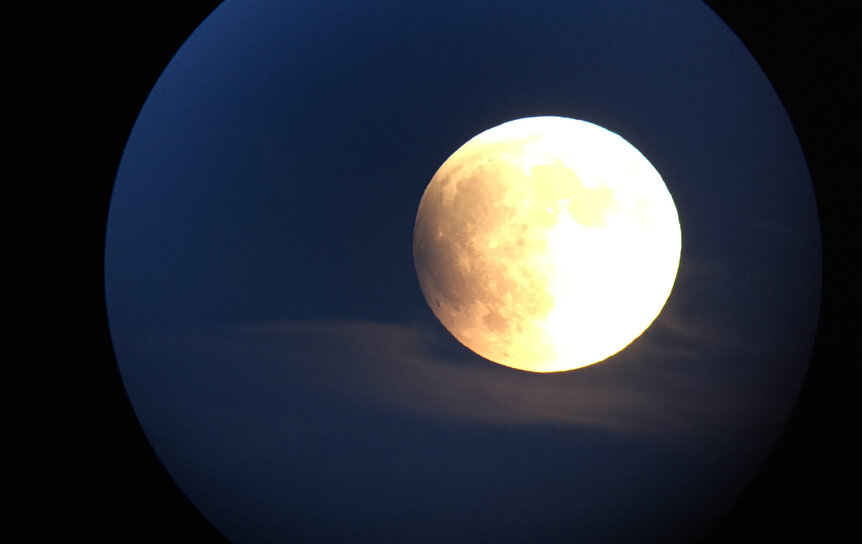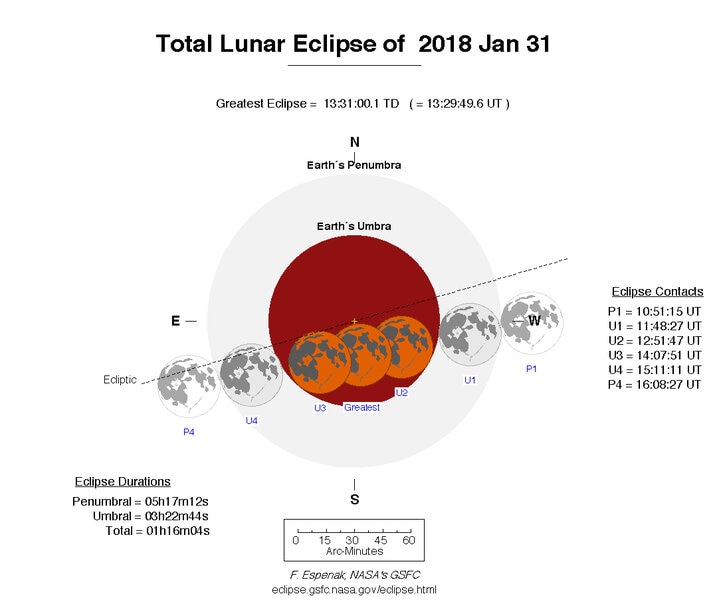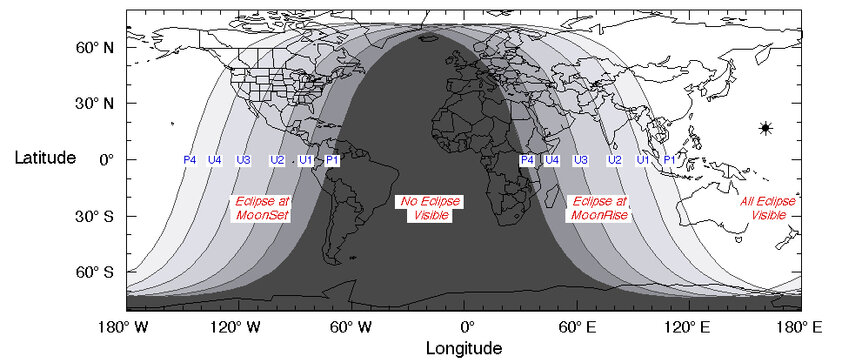Create a free profile to get unlimited access to exclusive videos, sweepstakes, and more!
Don't it make my red Moon blue: How to watch the total lunar eclipse on January 31

On the last day of this month — January 31, 2018 — the Moon will slide into the Earth's shadow in space. When it does, the Moon will go dark, and we'll get a total lunar eclipse.
This event is best visible from Asia, Australia, the Pacific islands, and the extreme western US. However, a piece of it is visible from everywhere in the US and Canada, though you'll have to be an early riser (or late-stayer-upper) to see it.
I'll get to the mechanics of this and how to watch it in a second. But I want to note a couple of interesting things about this eclipse.
First, it happens a little over a day after the Moon reaches perigee, its closest approach to Earth in its elliptical orbit. Technically I'd call this a proxigean eclipse (usually this term is used when you get a spring tide at the same time the Moon is at perigee, so I'm widening the term a bit here), but you'll most likely hear it called the "supermoon eclipse" in the media.
I'm not really a fan of the term supermoon, because I think it overinflates the actual event. The Moon appears roughly 10% bigger at perigee than it does at apogee (the farthest it gets from Earth in its orbit), which most people would never notice if someone didn't tell them. Let me put it this way: If Clark Kent were only as strong as 1.1 men, then calling it a supermoon would be fair. Otherwise … meh. I like the idea that it gets people interested in astronomy, and going outside to look at the Moon, but I'd prefer we did that a little more honestly.
I'll note too that this isn't a hugely rare event. The odds of any random lunar eclipse happening within a day (plus or minus) of perigee is 2 days / 27 days for the Moon to orbit the Earth = 1/14 or so. Lunar eclipses happen roughly twice a year, so we'd get a proxigean eclipse every few years just randomly (though it's more complicated than that since there are cycles to these events, but I'm just spitballing here). But I think it's still a fun thing to be aware of when you go out to see it!
A second thing that's neat is that this is the second full Moon in January. The first full Moon was on January 1. The Moon goes through a complete set of phases in about 29 days (it takes longer than a single orbit of the Moon because the Earth is orbiting the Sun too, and the Moon has to "catch up" to it in the sky; I explain it all in my episode of Crash Course Astronomy about the lunar phases). If you get a full Moon on the first or second day of the month, you can get a second one on the 30th or 31st. January is such a month this year! The nickname for the second full Moon in a single month is a blue Moon.
What's funny also is that February has 28 days this year, so it won't have a full Moon in it at all! We have a full Moon the day before February 1, and the next one on March 1, the day after February 28. The nickname for this event is black Moon (though the term has other meanings as well). This happens roughly every 20 years or so.
What I like about all this is that during the deepest part of the eclipse, the Moon can turn red (I explain that below). Some people call this the blood Moon. But what this means is that this eclipse is actually a proxigean blue red Moon followed by a black Moon.
Who knew our satellite was so polychromatic?
OK, enough of that. So, about this eclipse …
First, here's my Crash Course Astronomy episode on eclipses. It includes solar eclipses, but the lunar part starts at 6:43:
The Earth, like any illuminated object, casts a shadow in space. This shadow stretches away from it in the direction opposite the Sun (duh), and in general we can't see it. Space is empty, so there's nothing to see there.
But as the Moon orbits the Earth, it sometimes passes into Earth's shadow. There are actually two shadows; a dark one called the umbra and a less dark one called the penumbra. The easiest way to understand them is to imagine standing on the Moon and looking up at the Sun. At first, the Earth only blocks part of the Sun, giving you a partial eclipse. The sunlight hitting the Moon dims, but there's still enough to illuminate it. This is the penumbral shadow.
But after a time the Earth completely blocks the Sun. No sunlight reaches the Moon directly. It gets very dark, and the Moon is then inside the umbral shadow.
However, there is another factor. Sunlight streams through the Earth's atmosphere, lighting it up. When the Sun is directly behind the Earth, you'd see the Earth as a black circle in the sky, surrounded by a ring of light. But what you're seeing is the Sun on the Earth's horizon all around the Earth's circumference … in other words, you're seeing all the sunrises and sunsets on Earth at the same time.
How freaking cool is that?
Because of that, the air looks very red. That lights up the Moon during the deep eclipse, making it appear to be red as well.
So, wanna see all this?
The Moon enters the Earth's penumbra at 10:51 UTC (05:51 Eastern US time). You'll hardly notice this, since the Sun is only partially blocked by the Earth. Over the next hour it'll darken, and then the edge of the Moon will just start to enter the umbral shadow at 11:48 UTC (06:48 Eastern). The last bit of the Moon slides into the umbra at 12:51 UTC (07:51 Eastern). This starts the total eclipse, which lasts for about 1h:16m, until 14:07 UTC (09:07 Eastern). At 15:11 UTC (10:11 Eastern) the last edge of Moon leaves the umbra, and by 16:08 UTC (11:08 Eastern) the eclipse is completely done.
Note the times. If you live on the east coast of the US the Sun rises in the east around 07:00, so the Moon will set before the Moon is completely darkened. You'll get to see a partially eclipsed Moon set in the west as the Sun rises.
For me, in Colorado, the Moon sets at almost exactly the same time totality ends! I'll be able to see that entire part of the eclipse, but for me the Moon will be setting just as the eastern edge lights up again. I'm not sure I'll be able to see that at all, as I have mountains to my west that make my horizon higher; the Moon will go behind them a few minutes before it passes under the technical horizon (the boundary between Earth and sky if I lived somewhere flat).
But that should look pretty awesome: the blood red Moon setting in a purple dawn sky, and maybe, if the timing works out, the first rays of the Sun will light the mountaintops and make them pink. I think I'll be getting up early to see that! I just hope it's clear. January can be a bit rough around here weatherwise.
One thing I like about lunar eclipses is that, unlike their solar counterparts, they take their time. Totality lasts for over an hour! So there's no rush: I like to go outside, watch for a minute or two, go back in to warm up, then repeat after a few more minutes. It's easier to get photos of it, too, and I'll hopefully be able to get some with my iPhone connected to my spotting 'scope. Speaking of which, there's no danger to observing this; you're looking at the Moon, not the Sun, so go outside and use whatever optical aid you like: binoculars, telescopes whatever. The Moon's face will change as the shadow deepens, so it's fun to watch (and to photograph; here's a guide that'll help there).
Assuming you can see it. These things happen independently of the Earth's rotation, so sometimes you're on the part of the Earth facing the event, and sometimes our big round opaque planet blocks the view. I hope you're on the side that sees it! If not, there will be plenty of places streaming it, I'm sure (search for "lunar eclipse live stream" or "lunar eclipse live stream" to get a few links; I know my friends at the Virtual Telescope Project will be live-streaming it).
If you're up, give it a watch! The heavens are literally aligning for this event.





























